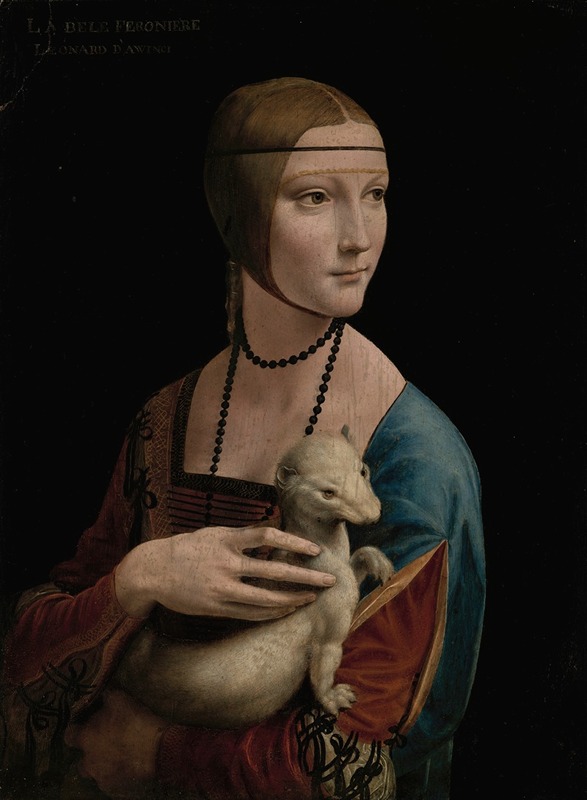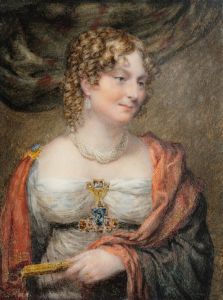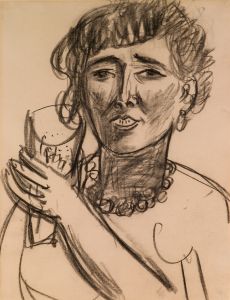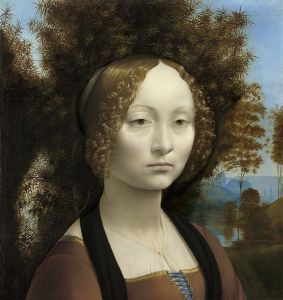
Lady with an Ermine – Portrait of Cecilia Gallerani
A hand-painted replica of Leonardo da Vinci’s masterpiece Lady with an Ermine – Portrait of Cecilia Gallerani, meticulously crafted by professional artists to capture the true essence of the original. Each piece is created with museum-quality canvas and rare mineral pigments, carefully painted by experienced artists with delicate brushstrokes and rich, layered colors to perfectly recreate the texture of the original artwork. Unlike machine-printed reproductions, this hand-painted version brings the painting to life, infused with the artist’s emotions and skill in every stroke. Whether for personal collection or home decoration, it instantly elevates the artistic atmosphere of any space.
"Lady with an Ermine" is a portrait painting by the Italian Renaissance artist Leonardo da Vinci, created around 1489-1490. The painting is an oil on wood panel and measures 54 cm by 39 cm (21 in by 15 in). It is one of only four female portraits painted by Leonardo, the others being the "Mona Lisa," "Ginevra de' Benci," and "La Belle Ferronnière."
The subject of the portrait is Cecilia Gallerani, a young woman who was the mistress of Ludovico Sforza, Duke of Milan. At the time the portrait was commissioned, Cecilia was about 16 years old and was known for her beauty, intelligence, and literary talent. She was also a poet and a member of the Milanese court.
In the painting, Cecilia is depicted holding an ermine, a symbol of purity and moderation. The ermine is also associated with Ludovico Sforza, who was a member of the Order of the Ermine. The animal's presence in the portrait is thought to be a reference to Ludovico's emblem and a symbol of his relationship with Cecilia.
Leonardo's skillful use of chiaroscuro, the contrast between light and dark, is evident in this work. The light falls gently on Cecilia's face, illuminating her delicate features and creating a sense of depth and volume. Her gaze is directed to the right, suggesting a moment of contemplation or awareness of something beyond the frame. The ermine, with its sleek fur and attentive posture, adds a dynamic element to the composition.
The background of the painting is dark and plain, which helps to focus the viewer's attention on Cecilia and the ermine. Leonardo's meticulous attention to detail is evident in the rendering of the textures of Cecilia's hair, the ermine's fur, and the fabric of her dress. The dress itself is a fine example of Renaissance fashion, with its intricate patterns and luxurious materials.
"Lady with an Ermine" has had a complex history of ownership. It was likely kept by Cecilia Gallerani until her death, after which it passed through various hands. The painting eventually became part of the Czartoryski Collection in Poland in the early 19th century. During World War II, it was seized by the Nazis and taken to Germany, but it was recovered after the war and returned to Poland.
Today, "Lady with an Ermine" is housed in the Czartoryski Museum in Kraków, Poland. It remains one of Leonardo da Vinci's most celebrated works and is admired for its beauty, technical mastery, and the insight it provides into the artist's approach to portraiture.
The painting has been the subject of numerous studies and analyses, which have explored its historical context, symbolism, and Leonardo's techniques. It continues to attract art historians, scholars, and visitors from around the world, who are captivated by its elegance and the enigmatic presence of Cecilia Gallerani and her ermine.


















